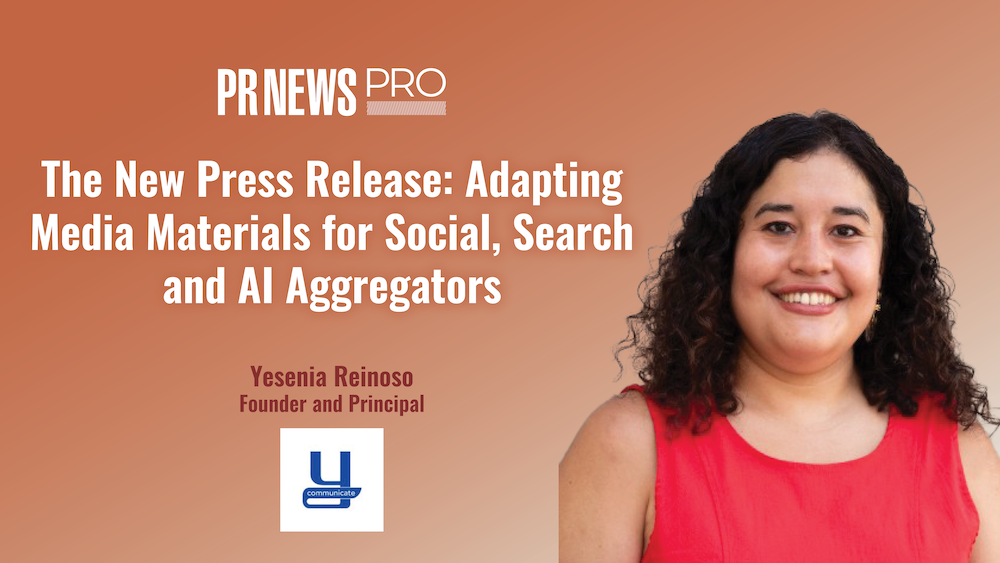MARKETERS EMBRACE DATA MANAGEMENT SYSTEMS, BUT THEY MAY NOT BE INTEGRATED
EVERYONE KNOWS a true enterprisewide data system when they see one: It links all units within a company, and consists of integrated software purchased from the same vendor. Right?
Think again. Many companies have chosen not to build one-stop systems, but to cherry-pick the best software out there, no matter what the source.
Take the Milwaukee Journal Sentinel, which is now in the process of installing an integrated data system. When completed, the new structure will use both new and old programs and link several – but not all – departments.
In some ways, the new system will conform to the common vision of an enterprisewide data linkup. It will provide representatives at multiple touch points a rounded picture of anyone who contacts any of the paper’s sales-related departments.
For example, a salesperson in the classified advertising department will know if an advertiser is also a subscriber, and if not will be able to offer a subscription that coincides with the placement of an ad, says database manager Laura Engel, a 23-year veteran of the paper.
The Journal Sentinel’s current systems do not allow for this type of on-the-fly information access. Instead, the firm has to extract data from the departments and do an external merge-purge, putting additional burdens on the in-house IT department, Engel says.
With the new system, users will be able to perform these types of operations from their desktop. Furthermore, anyone accessing the warehouse will use department-specific software, allowing them to carry out the separate plans generated for each facet of the business while using a common data pool.
The paper now uses a series of separate operational systems to perform basic business functions. The circulation department coordinates payment and start- and stop-service data. The advertising unit tracks production and billing information. But the company has not been able to record certain data about its customers and advertisers – i.e., household composition, company size, sales levels or SIC.
The driver of the new data management system is Lanham, MD-based Group 1’s DM 1, which provides the warehouse, query tool, and campaign manager. But the system had to be flexible enough to support and integrate information from MapInfo, a mapping software the newspaper uses to provide customer concentration data for its own use, as well as its advertiser partners. And it had to be able to provide easily exportable data for ASTech’s R-Logic, a retention software program specifically designed for newspapers that will remain on an independent server. Eventually, Engel plans to add an online analytical processing (OLAP) tool, which will allow the paper to import data from its Internet operations.
“The main component to this strategic initiative [the company’s three-year CRM plan] is to integrate all operations systems so all front-line employees can interact intelligently with your customers to maximize relationships,” says Engel.
>From the get-go, the exploration team wanted an open-architecture >system that allowed the company to pick and choose among the tools >available. Aside from not wanting to give up on the programs it was >using, the firm was afraid of compromising flexibility by using a >proprietary system with pre-integrated components. In some cases, >the integrated systems evaluated by the team simply didn’t have some >of the functions it wanted.
The open-architecture requirement was also insisted on by the newspaper’s information technology (IT) department. Initially, there had been some talk of having IT build the system internally, but due to the scope of the project, and the department’s other priorities, the company decided to go with packages where the expertise had already been built in, and to customize them as needed.
“We are used to out-of-the-box systems where 80% of the programming has been developed, and 20% is customized,” says Engel says. But with a system being built from the ground up, the proportions were reversed, a factor that has contributed to the three-year exploration process. “We want to get it right the first time. It’s always easier to edit than create.”
The newspaper business is different from most other industries, says Jennifer Koelling, a director of applications consulting at Group 1. Newspapers often try to store both business-to-business and consumer information in the same warehouse.
Given its regional nature, the average newspaper database can also store the entire universe of potential customers. This allows the paper to analyze market penetration rates, and to design programs that allow it to solicit to every potential prospect.
The Journal Sentinel also offers its mapping and demographic analysis capabilities to advertisers. The new data warehouse will allow it to provide its advertisers with data down to the individual level, and help them with their campaign management.
UICI
UICI, a Dallas-based insurance and affinity program marketer, is also building a “best-of-breed” system. The firm is working with Chapel Hill, NC-based KnowledgeBase Marketing to meet its scheduled launch data of Nov. 11.
The new integrated system will function as a marketing database, linking the company’s sales force with its direct marketing unit. However, it will not incorporate data from departments like accounting and collections, says Mike Long, director of database marketing for the company.
So what makes this an enterprise-wide system? Because it will remove several key departments from their silos, and enable the company to do things it could never do before.
For one thing, the system will open up direct channels for UICI, which currently relies primarily on agent sales forces for its insurance and automobile club membership services. Long hopes to capture the same level of information through the new platform as the company’s agents do with their face-to-face efforts.
Which is not to say UICI will rely less on its agent force – a primary source of business for the company is selling prospect names to its agents. But the system will allow the sales force to beef up its cross-sell activities for other UICI products.
“The sales force has to believe that collecting information is important to them,” says Long. “It will reduce their lead costs. There hasto be sales force buy-in or [the system] won’t work.”
Long also hopes to use his new tool to capture market research information. Current research projects, he says, give macroscopic views of the customer base, but like the Milwaukee Journal Sentinel Long sees the advantage in being able to record information attributable to a given customer, which will allow him to perform predictive analysis and generate individual-specific marketing programs.
Long also says that match rates between his customer base and some sources of outside data can be as low as 50%. On top of that, he has doubts regarding the accuracy rates of purchased data, at least as compared to that which his agents can compile by visiting the homes of prospects and asking them questions face to face.
“Anybody can buy overlay information and hire a modeler, but not everybody is able to capture proprietary information,” he says, anticipating the wealth of data available as being a significant strategic advantage for his company.
UICI has created several new staff positions to support its efforts. Even before the system was built, the company hired a Ph.D. in statistics, who ran cross-sell models, market basket analyses, and customer churn models to determine if anticipated business campaigns based off the new file would be supported by the data the company planned to use. The company also hired an engineer skilled at transferring data from mainframes-some of the data the company needs are currently housed on an Oracle system, while others are on an IBM AS 400-to the integrated Sun Microsystems Enterprise 4500 platform.
The actual marketing functions will be driven by TopDog, a campaign management tool, and SAS Enterprise Miner, which will serve as its analytic tool.
Long’s bosses gave him the flexibility not to show a return on the company’s investment (which he puts at “easily over $1 million but under $2 million”) on the first year, but Long does not want to indulge in their temporal largesse. Should the company increase its retention rates by one percent, says Long, they will have made the investment back. That would also easily cover the half-million dollar outlays planned for years two and three as the company applies more CRM, as opposed to marketing campaign analytics, to the system.
Initially, the marketing system UICI is putting into place will gather the information from several platforms that serve its various operations. The primary benefit from this will be its ability to cross-sell with a more rounded picture of its customer base. The company’s current cross-sale efforts are limited to extracting names from its health insurance program and offering them membership in its motor club.
The new system will also allow UICI to use direct channels. The company has generated a stripped-down version of its motor club membership, which Long feels will be easier to sell in a direct response setting than its higher-priced analog, which relies on a sales force. The company has already tested this product on a 150,000-piece drop, which was difficult to manage and follow up under its current system.
Why not go with an outside service bureau? Long was afraid of losing detailed tracking capabilities, as well as not being able to record responses other than straight sales that came in as a result of the mailing. The new infrastructure, he says, will record this type of data and more, opening the company up to explore direct marketing opportunities over the Internet, as well as through telemarketing and direct sales.
WeddingNetwork
For some operations, longer-term CRM concerns take a back seat to expanding the immediate customer relationship. As WeddingNetwork.com vice president, marketing Marc Wheeler freely admits, “We have 280 days from when a bride gets engaged to when she gets married. We are always looking to monetize that.”
There’s a lot of potential for monetization: Wheeler estimates that between gown purchase, the wedding hall, invitations, attendant gifts, and presents for the couple upward of $28,000 is spent on each wedding. The more his retail aggregation and registry site knows about its customers, the more of that the Denver-based company can lay claim to.
But he wasn’t going to be able to do so with the rudimentary database his company was employing before the spring of this year. The company was using a series of siloed spreadsheet to track its various operations, which included basic tracking for its online retail partners and elementary customer data capture. Data transfers between departments were done once a month, in a very painstaking merge-purge process.
WeddingNetwork.com uses Cognos, a self-described “data webhouse” primarily for back-end data aggregation and the analysis and reporting functions it offers. But WeddingNetwork.com has also integrated Responsys as the engine for its push e-mail campaigns, and will be integrating k-Commerce to provide customer buckets that will allow the company to design one-to-one marketing efforts. Site traffic analysis programs such as net.Genesis and predictive modeling software will allow Wheeler to influence them going forward.
One pre-implementation function WeddingNetwork.com did not do was a formal ROI analysis. At the time, the company’s priorities were not focused on the implementation cost-which has thus far amounted to around $300,000, with an estimated yearly upkeep of $50,000-but on how to get it done.
Now that the company has the figures, plans call for it to recoup its investment in three and a half years. Its marketing department will benefit through increased registry activity as (so Wheeler hopes) brides share their positive experiences with friends; its retail operations will, through site navigation analysis, be able to more effectively place and promote featured items on the site; and its accounting department will be able to synch up its own reports on merchandise purchased with those of its retail partners.
Given his choice of vendors who specialize in online commerce activities, “I am assuming that they have more knowledge,” he says.
In choosing to go with the “best of breed” system, Wheeler found that he was most comfortable working with vendors that “pushed back at me,” getting a sense of what his business needs were, and not trying to constantly appease him. The best partners, he feels, are those that take the time to learn about his business, and do not take what he says as gospel, instead challenging him on how specific features fit into his business needs.






